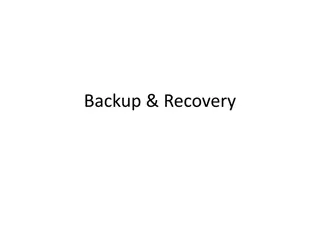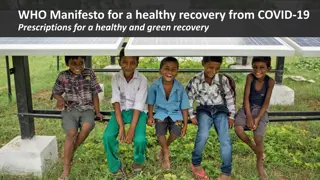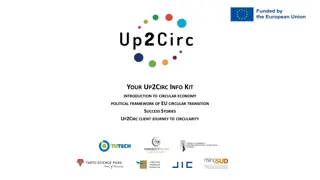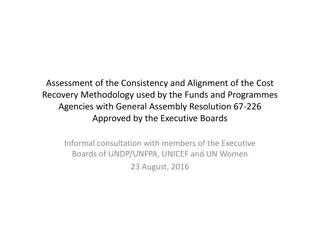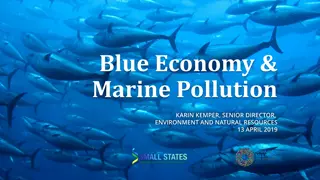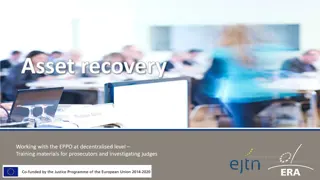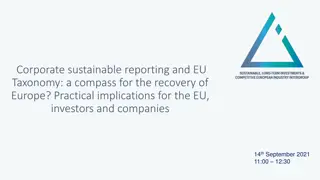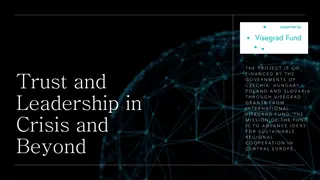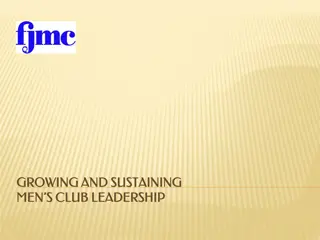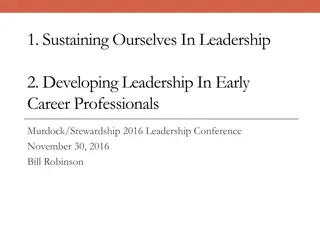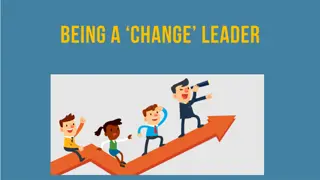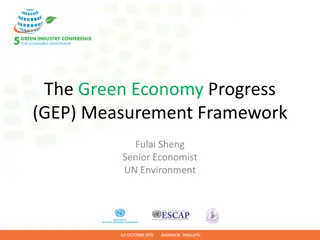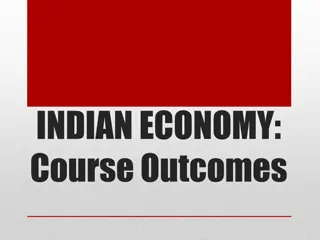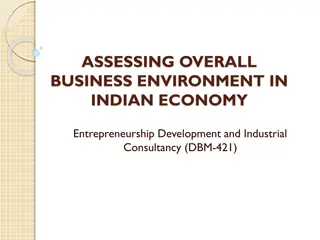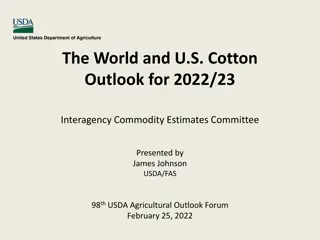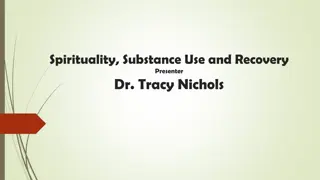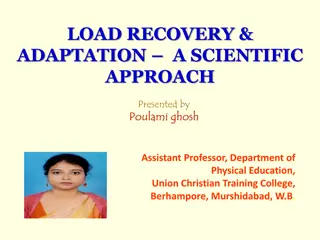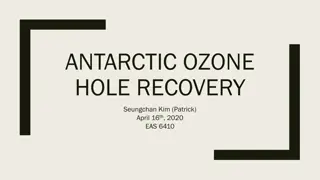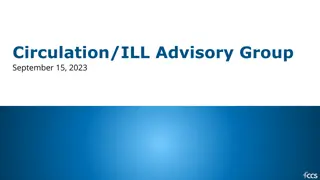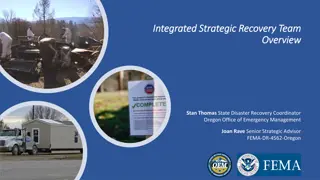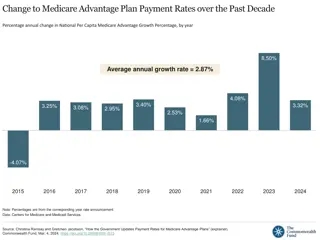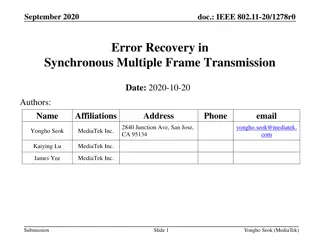Sustainable Recovery and Growth in Global Economy: A Decisive Decade for UK Leadership
Nicholas Stern and IG Patel discuss the crucial need for sustainable recovery and growth in the global economy, emphasizing the dangers of the pre-COVID growth path and the urgent response required to address climate risks. They highlight the opportunities for sustainable investments, the significance of the SDGs and the Paris Climate Agreement, and the imperative for decisive action in the coming years.
Download Presentation

Please find below an Image/Link to download the presentation.
The content on the website is provided AS IS for your information and personal use only. It may not be sold, licensed, or shared on other websites without obtaining consent from the author. Download presentation by click this link. If you encounter any issues during the download, it is possible that the publisher has removed the file from their server.
E N D
Presentation Transcript
Sustainable Recovery and Sustainable Growth in the Global Economy: a crucial decade for the world and a year for UK leadership Nicholas Stern IG Patel Professor of Economics & Government, London School of Economics and Political Science Chair of the ESRC Centre for Climate Change Economics and Policy Chair of the Grantham Research Institute on Climate Change and the Environment Co-Chair of the Global Commission on the Economy and Climate (New Climate Economy) Bank of England seminar, January 2021
Structure The pre-COVID context The COVID pandemic Actions for growth and recovery Working together 2
The dangers and fragilities of the pre-COVID growth path Low growth and productivity slowdown, especially in advanced economies. Recognised investment deficiency relative to savings. Rising inequality in many nations. Erosion of confidence in government, and political and social processes. Problems with social cohesion: rise of populism in some countries. Intense discussion around drivers of these trends, including impacts of globalisation on advanced nations. Likely to be a combination of many interrelated factors. Fragility, including in relation to pandemics, climate and biodiversity. Climate has become macro-critical in the last few years. But current economic analyses- in particular, integrated assessment models (IAMs)- underestimate the potential future risks of climate change, the falling costs of action and the wider benefits of a transition to low-carbon growth. The COVID pandemic has highlighted dangers and fragilities that had been building in the global economy, society and planet. 3
Dangers of climate and the scale of the response 70 The science is robust; evidence grows ever stronger. Current policy trajectory (no additional action) (4-5oC range) 60 With implementation of Nationally Determined Contributions (3oC range) Effects coming through at greater speed, scale and intensity than anticipated. Tipping points increasingly concerning (West Antarctic and Greenland ice sheets, Amazon rainforest). Immense risks to lives and livelihoods across the world. 50 Gap for 2oC (15 GtCO2e in 2030) 40 GtCO2e 30 Already ~1.1oC temperature increase. Have not seen >3oC for around 3 million years (when, e.g., sea levels were 10-20m higher). 20 2oC 1.5oC 10 The 2oC challenge is to accelerate action across the whole economy to 2030 to close the gap. Must peak emissions in next few years and go to net zero in next 50-60 years. For 1.5oC need to peak now and go to net zero by 2050. 0 2020 2030 2040 2050 2060 2070 2080 2015 Source: Stylised trajectories based on UNEP (2018) Immense productivity and growth opportunity from sustainable investments, both for COVID recovery and for structural change and transformation. Benefits for climate, nature, inclusion and resilience. 4
How the response was building pre-COVID The SDGs and the Paris Climate Agreement (2015). Numerous studies (e.g. NCE, 2018; OECD, 2018; Stern, 2015) suggesting that driving to low-carbon can also drive inclusive growth. Private industry, via individual firms, financial institutions, sector initiatives, business associations, coalitions and through organisations like the World Economic Forum, WBCSD, We Mean Business and so on, has made real progress on mobilising commitments and action on sustainability, especially in the last 2 or 3 years. Central banks: systemic risks and stress tests; NGFS; TCFD.Financial stability could be threatened by climate risks: physical, transition and legal. Coalition of Finance Ministers for Climate Action launched 2019. Global annual renewable power capacity expansion exceeded non-renewable capacity expansion every year from 2015-2019 (IRENA, 2020a). Strong technological change across the economy. COVID crisis has focused attention on building back better. Should tackle the dangers and fragilities of the pre-COVID growth path, and of the COVID crisis together. 5
Structure The pre-COVID context The COVID pandemic Actions for growth and recovery Working together 6
The world has been transformed by the COVID crisis Major crisis in world economy, finance/debt, health, society and politics. - Tragic human costs and loss of life. - Severe economic impacts across countries, with a major threat of global depression. Global growth estimated at - 4.4% in 2020 (OECD, 2020). Over the next five years, the crisis could cost $28 trillion in output losses (Georgieva, 2020a). - The crisis is truly global, unlike the 2008-09 financial crisis. Economic impacts are particularly severe in emerging markets and developing countries (capital flight, drastically reduced remittances, falling commodity prices). Increase in extreme poverty by 1.4% (WB, 2020a). - Debt stress severe. Global public debt is projected to reach a record high level of 100% of GDP in 2021 (IMF, 2020a). Many low-income countries hit hard. $12 trillion in fiscal response (Developed, Emerging markets and Developing). But in large measure in developed countries. Central banks responded swiftly and forcefully in advanced economies. - Central bank balance sheets increased, on average across the US, EU, Japan, UK and Canada, by 10% of GDP during the first three months of the crisis (BIS, 2020). Danger of mass unemployment around the world. Youth unemployment, in particular. Children out of school. Potential undermining of the social fabric. Danger of lost decade for development. 7
We must tackle the COVID and climate crises together The dangers involved in climate change are still bigger than the crisis we are experiencing from COVID. There is no vaccine for climate change . Recognise the centrality of investment. Investment is at centre stage right through from rescue to recovery to transformational growth / net zero. Investment can tackle simultaneously: health/ education; unemployment/ growth; inequality/ social cohesion; climate/ biodiversity. The realisation of investment requires sound policy and the right kind of finance, on the right scale at the right time. Across the world there is great investment potential and strong savings (negative or zero real interest rates for many countries), but a great deficiency in linking potential investment and savings. Failing to take strong action on investment would give us a deeply dangerous world. A key moment in world history. 8
Structure The pre-COVID context The COVID pandemic Actions for growth and recovery Working together 9
Investment and policy Recovery and the creation of strong, sustainable, resilient and inclusive growth require powerful global action. Investment and innovation at the core. This should cover physical, natural and human capital. Important drivers for the recovery should include investments that are fast, labour-intensive, with high multipliers and co-benefits, including for climate and resilience. Just what Keynes would have suggested. Strong examples in physical capital (retrofitting buildings) and natural capital (restoring of degraded land) (Hepburn et al., 2020). But this is more than a simple Keynes demand boost story; it is also a Harrod growth story, for the decade, from stronger investment. Need a substantial increase in the share of investment for the coming decade, over and above that for the decade following the financial crisis, to support growth and productivity, shift investment to support structural change (incl. low-carbon), and expand and renew infrastructure. The level, nature and balance of investment will be country-specific. Likely orders of magnitude of this increase, relative to pre-COVID levels of investment, for advanced countries are around 2 percentage points of GDP, emerging markets 3-4 percentage points, and developing countries slightly higher. Work in progress. Realising this investment will depend on policy and finance. Sound and credible policy needed, e.g. carbon pricing, to create a strong investment climate. High returns from co-ordinated infrastructure investment (Georgieva, 2020b). The importance of a just transition, managing dislocation. Public policy for rapid and fundamental change: time is of the essence. 10
Innovation and discovery - drives down costs, spurs further innovation and spillovers Global weighted average LCOE for solar PV, 2010 2019 Solar power and LED costs have plummeted as the world has scaled investment and innovation, with co-benefits of reduced emissions and pollution. Same can happen with batteries, hydrogen, etc... 0.4 0.378 0.35 0.286 0.3 2019 USD/kW 0.25 0.223 Clear, credible signals can draw through both investment and innovation. Carbon pricing important; taking care of distributional effects; city design; regulation, e.g. no sale of ICEs after 2030; government investment in R&D. Need a package of policies and credibility of policies. Be predictably flexible . 0.2 0.175 0.164 0.15 0.126 0.114 0.092 0.1 0.079 0.068 0.05 0 2010 2011 2012 2013 2014 2015 2016 2017 2018 2019 Year Source: IRENA (2020b) Much of what we need to do can be done with existing technologies, but to get to net zero by mid-century, strong development of new technologies will be necessary. Policy framework, public-private collaboration and systemic change can drive transformation. 11
Financing investment and innovation Move the whole financial system (work of Mark Carney on risk, reporting, returns & mobilisation key in developed economies to get right kind of finance, on the right scale, at the right time). Special role for development banks (multinational and national) to reduce, manage and share risk, especially in emerging market and developing countries given economic/ debt challenges. International: SDRs; financing capacity of MDBs and DFIs. Urgency of debt restructuring. Make the most of the National Infrastructure Bank in the UK. Private finance pledges for net-zero by 2050 should be calibrated and translated into near-term targets. Public and private finance for rapid change and risk management.
Structure The pre-COVID context The COVID pandemic Actions for growth and recovery Working together 13
Importance and opportunities for international action Four wins to collaboration: Keynesian recovery; expectations and growth; cost/technology; pollution/climate/biodiversity. The big challenge of debt restructuring. Key institutions for international finance and policy: MDBs/IMF/DFIs. Collaboration of central banks, including NGFS. Collaboration of finance ministries, including Coalition of Finance Ministers on Climate Action. WEF and private sector. 3 years of G7/G20 could be 3 years of acting together to make this a transformational decade. Major events in 2021, including G7, G20 and COP26. Major opportunity for UK leadership.
References BIS (2020). Central banks response to Covid-19 in advanced economies. BIS Bulletin: No 21. Bloomberg Green (2021). Lessons from the Sunshot Initiative. BloombergNEF (2019). A Behind the Scenes Take on Lithium-ion Battery Prices. https://about.bnef.com/blog/behind-scenes-take-lithium-ion-battery- prices/ Dikau, S. Robins, N, & Volz, U (2020) Toolbox of Sustainable Crisis Response Measures by Central Banks & Supervisors Georgieva K (2020a) Transcript of International Monetary Fund Managing Director Kristalina Georgieva's Opening Press Conference, 2020 Annual Meetings. Georgieva K (2020b) Continued Strong Policy Action to Combat Uncertainty. Hepburn, C., O Callaghan, B., Stern, N., Stiglitz, J., & Zenghelis, D. (2020). Will COVID-19 fiscal recovery packages accelerate or retard progress on climate change?, Oxford Review of Economic Policy, 36(Supplement_1), S359 S381. IEA (2020). Global EV Outlook 2020. Paris, IEA. International Monetary Fund (2020a). Fiscal monitor: Policies for the recovery. International Monetary Fund (2020b). G-20 Surveillance Note. G-20 Leaders Summit November 21 22, 2020. IPCC (2018). Special Report: Global Warming of 1.5 C. IRENA (2020a). Renewable capacity highlights. Abu Dhabi, International Renewable Energy Agency. IRENA (2020b). Renewable Power Generation Costs in 2019. Abu Dhabi, International Renewable Energy Agency. McKinsey (2016). Poorer than their Parents? Flat or Falling Incomes in Advanced Economies. McKinsey Global Institute. New Climate Economy (2014). Technical note: Infrastructure investment needs of a low-carbon scenario. New Climate Economy (2018). Unlocking the inclusive growth story of the 21st century. OECD (2018). Opportunities for All: A Framework for Policy Action on Inclusive Growth. OECD (2020) OECD Economic Outlook, December 2020. Robins, N. (2020) The Road to Net-Zero Finance, December 2020. Report for the UK Climate Change Committee Stern, N. (2015). Why Are We Waiting? The Logic, Urgency and Promise of Tackling Climate Change. MIT Press. World Bank (2020a). COVID-19 to Add as Many as 150 Million Extreme Poor by 2021 World Bank (2020b). Global Monthly: November 2020.










